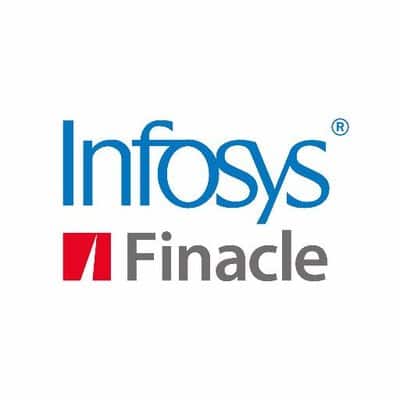Rajashekhara V Maiya, Global head of Business Consulting and Product Strategy for Infosys Finacle, discusses five trends affecting banks and financial service providers.

In 2020 when we introduced the theme of “Scaling Digital,” little did we imagine the speed and intensity with which it would take hold. We continue with the same broad theme in 2021 as “Scaling Digital Leadership.”
This article takes a look at the 5 “scaling digital” business trends that will make the most impact on banks and other financial service providers around the world in the new year. The trends are, inevitably, discussed against the backdrop of the Covid-19 pandemic, which rewrote almost every important aspect of banking, perhaps forever, and amplified the need and urgency for digital transformation at scale.
Scaling Digital Business Innovation
It will take a mindset of firsts—digital-first, customer-first, API-first and technology-first—to scale innovation throughout the business. This means any innovation must be built “digital” (digital form, digital channels etc.); must be highly customer-centric (contextual, personalized); should leverage APIs to integrate seamlessly with external ecosystems and also employ technologies, such as cloud and mobile, before any other.
With that in place, banks can look at scaling business innovation along three axes—product, process and people.
Product innovation, through the stages of design, development, delivery and distribution, should be digitized and scaled, both in terms of time and reach—that is, they should be scaled quickly to keep pace with nimbler rivals, and targeted at not just own customers, but also other consumers who may be getting those products from a fintech, retailer or other provider.
Banks will also need to rewrite a number of pre-pandemic processes in 2021 to align them with external and internal demands. To cite just one example, all the processes supporting product innovation will have to be reimagined to fit much shorter lead times from concept to market. Hence test launches should be conducted digitally, as must customer selection and communication.

With the pandemic impacting people, their lives and livelihoods the most, one of the goals of digital business innovation should be to find ways to maintain the quality and productivity of remote workers, many of whom will continue to work remotely for a long time to come. Banks that invest in reskilling and redeploying their employees and digitally enable them to perform better remotely, will do better than others in 2021 and beyond.
Scaling Digital Engagement
In marketing, the moment of truth is when a customer or user interacts with a brand, product or service to form or change an impression about it. The best customer experiences come from providers that know how to capture the 4 moments of truth in a customer journey—at the exploratory (zero moment of truth), engagement (1st), experience (2nd) and renewal (3rd) stages. In return, customers reward the providers with wallet share, loyalty and advocacy.
A study by McKinsey found that 75% of those using digital channels during the pandemic were first-timers. If financial service businesses are to retain customers on digital channels post-Covid in 2021 and beyond, they should enrich every interaction with better communication and engagement. However, they will need to do this differently, since the old norms of in-branch, one on one communication, no longer hold. The future is all about scaling engagement remotely using digital means to provide omni-channel experiences rather than optimum channel experiences.
Scaling Operational Transformation
Digital financial service players have blown apart efficiency benchmarks with cost-income ratios ranging from 20%-30%, even as traditional banks report 50%-60% CI ratios. The latter risk losing the support of key stakeholders, who would not like to work with, do business with, or invest in an inefficient organization. The answer lies in operational transformation at speed and scale. There are many things banks can do, starting with shedding non-core assets, divesting non-core activities such as data center, infrastructure and network management, and reducing capital expenditure by subscribing to services on the cloud.
Scaling Work, Workplace and Workforce Transformation
Covid-19 has not even spared work and where it is done. Not long ago, banking careers were sought after because they were respectable and secure. But the pandemic challenged that by chopping and changing work across roles. With branches either scaled down or closed altogether and barely any customers walking in, banks need to transform some of the work—such as that performed by clerks or tellers—to suit the new reality. Even work done outside the branch, such as property inspection and customer meetings, need to be reorganized, doing only what is essential or not digitizable physically, and taking everything else remote and online.
The workplace is no longer a place to go to. For customers and bankers both, the “workplace” that used to mean a branch or bank office, is now invariably, the home. In 2021, banks should focus on aligning the workplace context to digital delivery, and to supporting more and more transactions from “non workplace” locations. This is necessary even without the Covid factor, given that banking transactions were already fleeing bank channels in favor of third-party open banking channels.
Even the workforce is not what it used to be. Banks that hired people for life in a continuous cycle of recruitment, onboarding, training and deployment, should look at hiring part-time/ short-term, being inclusive, and tapping the gig economy as much as possible. Employees engaged in direct selling, or brokers, who have seen their jobs go digital, may need to be rebadged, reskilled and repurposed.
Scaling Risk Management
The Covid-led economic crisis is unique because it has ushered in both liquidity and solvency risk together. While banks have learned from previous crises to anticipate liquidity risk, this is the first time they have come face to face with solvency risk at scale. The way to deal with it is to look from more than just a financial perspective. So now, banks must consider a scenario where they are financially solvent but are at risk of insolvency at the hands of departing customers, employees and shareholders, and manage that in 2021 and beyond.
Partnered with:
